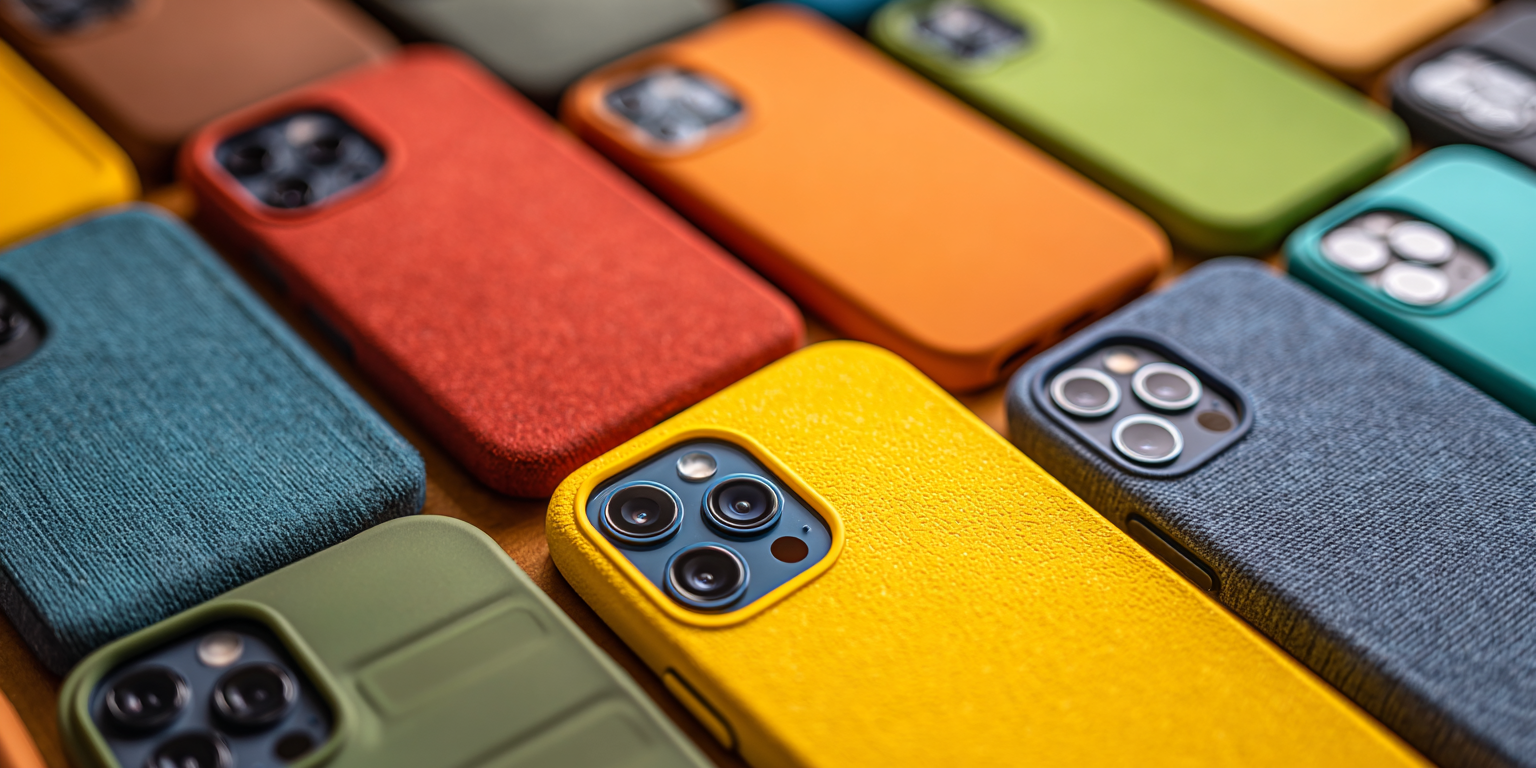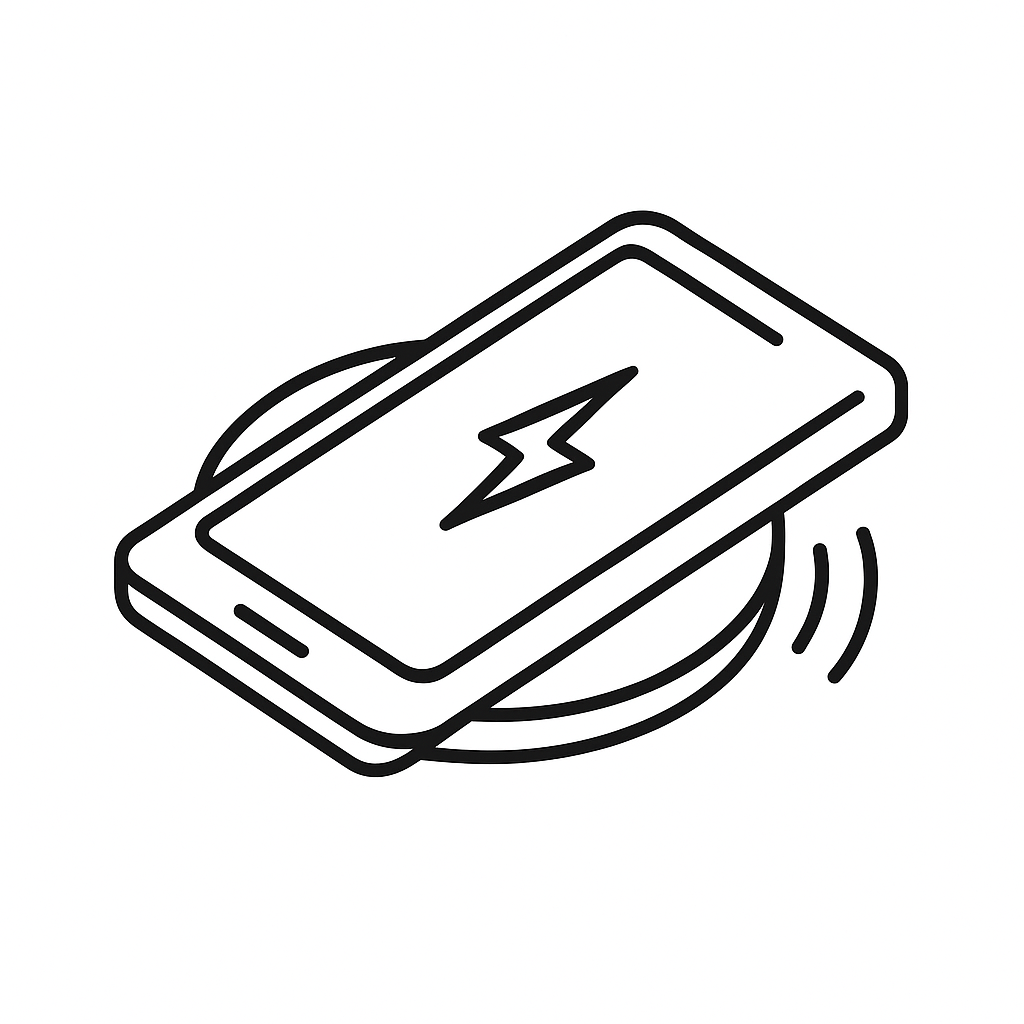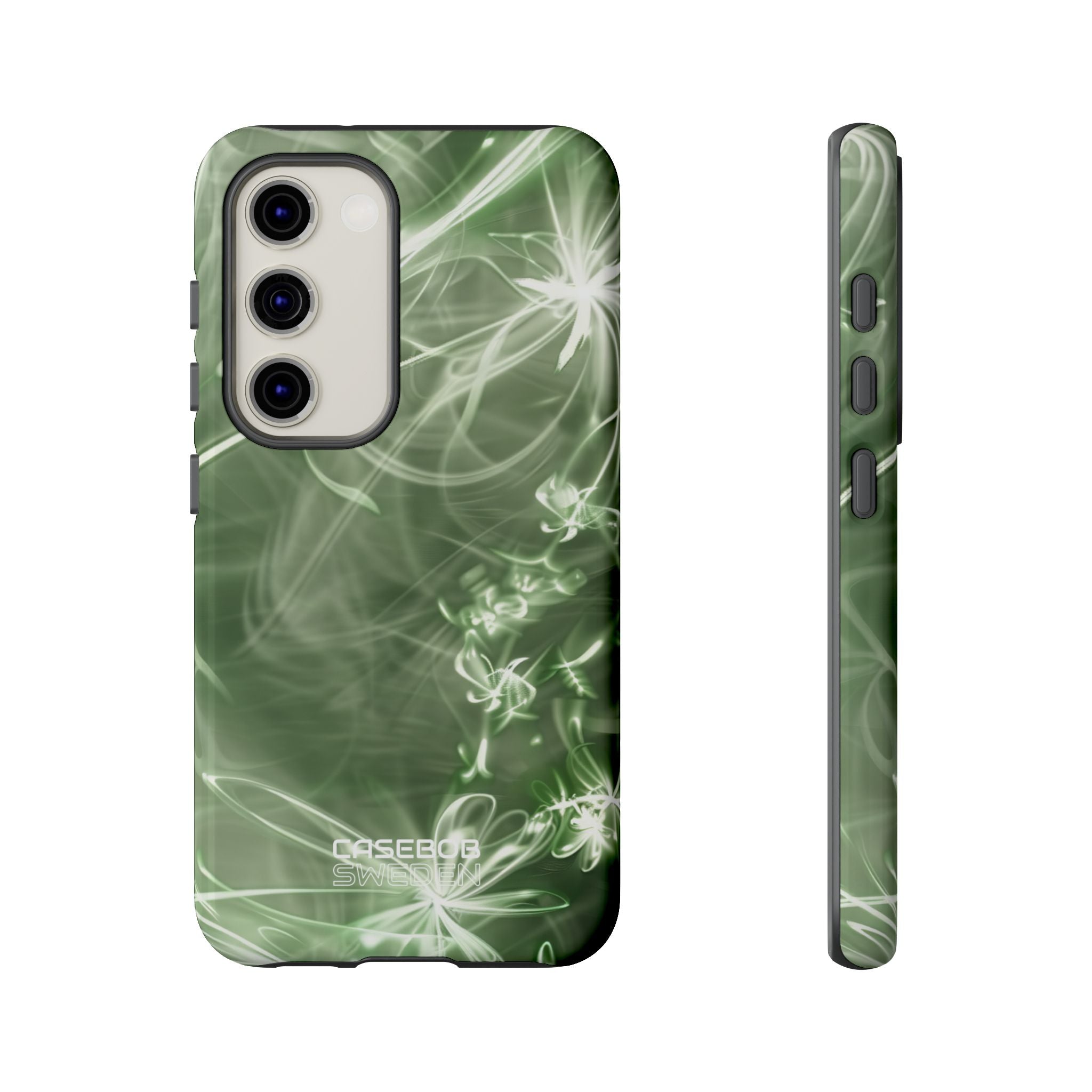Americans reported damaging their devices at an alarming rate - 78 million cases in 2024 alone . Phone cases have become must-have accessories to protect these devices. Corning's latest Gorilla Armor 2 can survive drops from up to 2.2m (7.2ft) , yet our smartphones remain vulnerable to real-life accidents.
The need for protective phone cases persists despite phones featuring tougher glass. Market statistics prove this point - the global cell phone case market reached $25 billion in 2024 . We tested 65 different options and found that the best phone cases combine protection with style and functionality. Users can choose between simple solutions and maximum durability options.
This piece covers everything you need to know about selecting the perfect case. You'll find details about protection levels and options that match your personal style without compromising safety.
How Phone Protection Has Evolved Over the Years
Remember those indestructible Nokia phones from the early 2000s? The rise of phone protection tells a fascinating story about how our devices changed from unbreakable bricks to delicate glass slabs that need constant protection.
From flip phones to glass slabs
The original mobile phones had plastic bodies built for durability, not looks. These early devices could take drops without much damage—quite different from today's fragile smartphones. Things started to change when Apple launched the first iPhone in 2007 with an aluminum body that focused on premium feel rather than toughness [1].
The smartphone market went through a dramatic change from plastic builds to metal frames and glass bodies. This wasn't just about looks—metal frames made phones more rigid and helped spread out impact forces [2]. But this design revolution had a big downside: phones became more breakable.
Phone screens kept getting bigger, growing from 3.2 inches in 2010 to 6.0 inches in 2019 [3]. The bezels got smaller too, with screen-to-body ratios jumping from 46% in 2010 to 80% in 2019 [3]. These all-glass, bezel-free designs created more areas that could crack and break.
The rise of Gorilla Glass and Ceramic Shield
Touchscreens became standard, and manufacturers needed stronger glass to protect these expensive devices. Corning's Gorilla Glass revolutionized screen protection after its formal launch in February 2008, following its use in the original iPhone [4].
Gorilla Glass has gone through nine generations, each better at handling drops and scratches. The newest version, Gorilla Armor, handles drops onto concrete three times better and resists scratches four times better than competitors [4]. These improvements show the ongoing challenge of making glass that's both scratch-resistant and drop-proof [4].
Apple took things further by working with Corning to create Ceramic Shield in 2020. This glass-ceramic material uses nano-ceramic crystals in the glass matrix to make it transparent yet stronger. Apple says Ceramic Shield handles drops four times better than previous iPhones [4].
Why phone cases became essential
Modern smartphones are still surprisingly easy to break, despite all this tech. Drop tests show that even the Samsung S24 Ultra with its titanium frame and Gorilla Armor still breaks when dropped from 6 feet [5]. The iPhone 16, with its aluminum sides and ceramic shield, gets cracked screens and scuffed corners from drops [5].
The numbers tell the story: 75% of display damage happens from drops on corners or edges [3]. Phone cases have become a must-have rather than just an accessory.
Cases really do work—studies show they cut breakage rates in half [3]. They protect phones from more than just drops by keeping out sand, lint, spills, and dirt that can harm ports and internal parts [6].
Money is another good reason to use cases. Screen repairs on flagship phones can cost more than $300. Spending $50 on a case and $30 on a screen protector makes sense when it's just 5% of what you'd pay for a new high-end phone [6].
Smartphones keep getting more glass surfaces and higher price tags. Cases have changed from simple accessories to essential protection for our expensive but fragile tech investments.
Are Modern Phones Durable Enough Without a Case?
Smartphones now cost more than $1,000, and users want to know if these premium devices can survive without extra protection. We need to look at both lab data and ground experience to find the answer.
Drop test data from labs and real-life use
Advanced smartphone testing goes way beyond simple quality checks. Consumer Reports puts phones through tough tumbling tests. They drop devices 100 times in a tumbler lined with stone to copy waist-high falls onto concrete [7]. Lab engineers have good news. "About a third of phones would fail" these tests in earlier years, but they "haven't seen a phone fail the drop test in a long time" [8].
Labs run equally demanding tests. Some manufacturers drop test phones from 1.2 meters onto hard surfaces [9]. Others use explicit analysis to copy impacts at velocities of 5425 mm/s [10]. Results look promising. Corning's Gorilla Glass 5 survived drops of 0.8m in 2016. Gorilla Glass Victus reached 2m in 2020. The latest Gorilla Armor 2 can handle falls from 2.2m [8].
Insurance data paints a different picture. The number of Americans with phone damage dropped from 87 million in 2020 to 78 million in 2024 [8]. Yet damage rates stay high. Drop impacts cause the most damage in ground scenarios. These often lead to cracks near the midpoints of module edges [11].
What makes a phone 'tough' today?
Modern smartphone durability comes from several tech advances:
-
Chemically strengthened glass - Corning's glass manufacturing process uses an ion-exchange bath. It "pulls smaller ions such as lithium out of the glass and swaps in larger ions such as potassium." This creates a "layer of compressive stress" that fights fractures [8].
-
Improved frame materials - Phone makers switched from plastic to "robust aluminum alloys, stainless steel and even titanium" [2]. These materials provide structural strength and help spread impact forces.
-
Water and dust resistance - IP ratings became standard features. IP-rated phones grew from 2% market share in 2013 to 58% in 2017 [9].
-
Specialized designs - Rugged phones fill a niche market. They have thick housings built to handle damage from water, shock, dust, and vibration [12].
Today's phones use materials and designs built to handle daily wear and tear. Gorilla Glass makers do the largest longitudinal study of "fracture analysis." They "study tiny shards of glass to learn about the source of the original fracture" [8]. This helps them keep improving durability.
Understanding screen and frame vulnerabilities
These improvements help, but smartphones still face certain damage risks. Studies show corner or edge drops cause almost 75% of display damages [9]. Larger screens and smaller bezels make this worse.
Displays grew from 3.2 inches in 2010 to 6.0 inches in 2019. Screen-to-body ratios jumped from 46% to 80% in that time [12]. All-glass, bezel-free smartphones now rule the market. This means more surface area can crack or break.
Frame construction plays a key role in impact protection. Research shows thin-walled clamshell builds might lack the rigidity needed against impact loads. This can separate the housing during drops [11]. Phone failures happen often—47% in the first two years, and 39% between years two and three [12].
Ground experience often differs from lab results. A Consumer Reports expert puts it straight: "Look, I'm not saying the screen won't get scratched at some point, and if you drop it just right, or it lands on a little rock, say goodbye" [8]. Even Corning's director of technology for Gorilla Glass uses a case, though she says it's mainly to hold her wallet [8].
Protective cases like Tough, Tough+, and Impact Clear+ models are a great way to get protection from these risks. Data backs this up—protective cases can cut breakage rates in half [12]. That's a strong reason to use them, whatever manufacturers say about durability.
Types of Phone Cases and What They Offer
Image Source: Tech Advisor
Picking the right phone case means finding the sweet spot between protection, functionality, and style. Each type brings something different to the table, depending on what you need and how you use your phone.
Tough vs Tough+ vs Slim: Which is right for you?
Phone protection ranges from light to heavy-duty defense. Slim cases give you simple scratch protection without the bulk. They use light polycarbonate that keeps your phone looking sleek [13]. These work great if you're careful with your device and rarely drop it. Tough cases pack a punch with their dual-layer design. They combine a shock-absorbing TPU inner layer with a hard polycarbonate shell that gives you military-grade protection from drops up to 15 feet [14]. Tough+ cases take it up a notch by adding MagSafe compatibility while keeping that same dual-layer protection against daily bumps and drops.
Clear cases: Why do they turn yellow?
Clear cases turning yellow is a common headache, and there's science behind it. Most clear cases start with a blue tint because manufacturers try to offset the natural yellow in the material [15]. Three things make them yellow over time: UV light breaks down the material's chemical bonds, heat from the sun or your hands speeds up this breakdown, and your skin's natural oils build up [15]. Hard polycarbonate cases hold up better against yellowing than soft silicone ones [15]. You can't really fix yellowing once it starts. Your best bet is to clean your case often and keep it away from direct sunlight.
Wallet and Bio cases: Functionality vs sustainability
Wallet cases do double duty by protecting your phone and holding your cards and cash [16]. They even give you a bonus - those stored cards act as extra cushioning when you drop your phone [17]. In spite of that, putting all your eggs in one basket means losing everything if your case goes missing [18]. Bio cases tackle environmental concerns head-on. They use plant-based polymers and materials that break down naturally [14]. These green options protect just as well as regular cases, and some makers now use up to 55% recycled materials [19].
Flexi and Impact Clear+: Grip and drop protection
Flexi cases are made from soft, flexible TPU that feels great in your hand and soaks up impacts [20]. You can still see your phone's design through their frosty clear finish [20]. Impact Clear+ cases step up the clear game with reinforced corners that use air-cushion tech for better drop protection [21]. They protect your screen and camera with raised edges while staying slim [21]. Both types work with wireless charging, and Impact Clear+ comes with built-in magnets for MagSafe accessories [21].
How to Choose the Best Phone Case for Your Needs
Picking the right phone case starts with knowing what you need. The sort of thing I love about a good case is how it blends protection and useful features while looking great.
Do you need MagSafe compatibility?
MagSafe technology, introduced with the iPhone 12 in 2020, features a ring of magnets positioned around the charging coil [4]. This magnetic array lets accessories attach securely while making sure wireless charging lines up perfectly.
Here's what makes MagSafe cases worth thinking about:
-
Smooth wireless charging at faster 15W speeds (compared to 7.5W with standard Qi chargers) [22]
-
Accessories like card wallets and mounts stick firmly in place [4]
-
You'll get access to more compatible accessories as they come out [4]
The Impact Clear+ and Tough+ cases from casebob.com give you full MagSafe features while keeping your phone safe.
Balancing protection, style, and bulk
Getting the right mix of durability and looks means making some choices. Your priorities should focus on:
How often you drop your phone – A Slim case works well if you rarely drop your phone. It gives simple protection without extra bulk. People who drop their phones more should look at Tough cases with stronger corners and two-layer builds.
Your style choices – Clear cases show off your phone's design, but they might turn yellow as time passes. Bio cases are great for the environment with materials that break down naturally. Wallet cases add a practical touch by holding your cards.
How it feels in hand – The case's thickness changes how you grip it and how easily it fits in pockets. Flexi cases give you a solid grip with soft TPU material that isn't too bulky.
Cases for different lifestyles: commuters, parents, minimalists
Your daily life should guide which case you pick:
Commuters love Wallet cases that combine their essentials into one package. They don't need separate cards and cash anymore [23].
Parents need cases that can handle surprise drops. Look for ones with air-cushioned corners and edges that protect screens and camera lenses [24].
Minimalists want cases that keep their phone's original look. The Slim or Impact Clear+ cases protect your phone without hiding its design [25].
The best case for you should match your phone's main use and where you take it most often.
Where to Buy Phone Cases and What to Look For
Picking the right store to buy your phone case matters just as much as selecting the case itself. Quality protection for your investment depends on knowing where to shop and what features to look for, especially with so many choices these days.
Trusted online stores like Casebob.com
Research reveals that most Americans prefer to buy their phone accessories online - 54% compared to 24% who shop in stores [6]. Casebob.com and similar trusted retailers give you detailed selections that fit every need. Their lineup ranges from drop-resistant Tough and Tough+ cases to eco-friendly Bio cases. You'll get peace of mind with Casebob's 30-day return policy [26]. Manufacturers that have been around a while typically give better warranty coverage and maintain stricter quality standards than lesser-known brands.
What makes a case worth the price?
The true value of phone cases comes down to several key factors:
-
Affordability: About 71% of buyers list price as their main concern [6]
-
Durability: Protection and long-lasting quality matter most to 61% of customers [6]
-
Esthetics: Look and style drive 30% of buying choices [6]
-
User feedback: Reviews help 24% of shoppers make their decision [6]
One industry expert points out, "You get what you pay for doesn't always apply to phone cases, where high-end options don't always equal better protection" [27]. Good news is that most quality cases cost $30 or less - a small price compared to replacing your device.
Avoiding low-quality knockoffs
Fake phone cases create huge problems in the market. "The phone case industry is riddled with knockoffs," says Kristen Tatti from Otter Products [27]. Here's how to spot fakes:
Watch those prices - anything suspiciously cheap usually means it's counterfeit [28]. Look at the packaging closely for red flags like spelling mistakes, poor printing quality, or damage [29]. Your best bet is to buy directly from manufacturers or their authorized sellers [27].
Amazon shoppers should stick to items that say "Ships from and sold by Amazon.com" or "Ships from and sold by [Official Brand]" [29]. MagSafe case buyers need to check for the Made for iPhone (MFi) certification on the package to guarantee quality and compatibility [3].
Conclusion
Conclusion
This piece has explored why phone cases remain essential accessories despite technological advancements in device durability. Without doubt, the statistics speak for themselves—78 million Americans reported phone damage in 2024 alone, which proves protection matters.
Our exploration of various options shows that the right case depends on your lifestyle and needs. Careful users might prefer the Slim case from casebob.com because it protects against scratches without added bulk. Users prone to accidents would benefit from the dual-layer construction of the Tough or Tough+ cases that offer military-grade drop protection.
Modern cases serve multiple purposes now. The Wallet case eliminates the need for separate card carriers, and the Bio case appeals to environmentally conscious users through its biodegradable materials. MagSafe compatibility has become crucial for iPhone users who want faster wireless charging and access to magnetic accessories.
Quality should never be compromised even though price matters when selecting a case. Reputable retailers like casebob.com offer reliable protection backed by warranties, unlike market knockoffs. The best value comes from cases that balance durability, functionality, and style at a reasonable cost.
Note that your case represents both a practical investment and a personal statement. The right case should protect your device while complementing your lifestyle—whether you choose the crystal-clear view of an Impact Clear+ case or the better grip of a Flexi model. Modern smartphones continue evolving with tougher materials and improved designs, yet the humble phone case remains your device's best defense against life's inevitable drops, bumps, and scratches.
References
[1] - https://www.pocket-lint.com/smartphone-durability-apple-samsung/
[2] - https://www.tbsnews.net/tech/going-caseless-how-level-mobile-phone-durability-increasing-again-1116691
[3] - https://timesofindia.indiatimes.com/technology/tech-tips/is-your-iphone-magsafe-case-fake-or-genuine-simple-ways-to-tell/articleshow/109948379.cms
[4] - https://www.mous.co/blogs/news/what-makes-a-case-magsafe®-compatible
[5] - https://www.aol.com/evolution-smartphone-damage-drips-drops-045900585.html
[6] - https://business.yougov.com/content/48154-american-consumers-and-cell-phone-accessories-spending-patterns-and-preferences
[7] - https://www.news4jax.com/money/2023/10/18/cellphone-durability-does-your-smartphone-pass-consumer-reports-tough-tests/
[8] - https://www.bbc.com/future/article/20250410-why-your-phone-doesnt-need-a-case-anymore
[9] - https://pmc.ncbi.nlm.nih.gov/articles/PMC7871336/
[10] - https://2021.help.altair.com/2021/hwsolvers/os/topics/solvers/os/phone_drop_test_analysis_tutorial_r.htm
[11] - https://www.researchgate.net/publication/232981629_Drop_tests_and_impact_simulation_for_cell_phones
[12] - https://www.researchgate.net/publication/347351284_Durability_of_smartphones_A_technical_analysis_of_reliability_and_repairability_aspects
[13] - https://supcase.com/blogs/blog/rugged-vs-slim-phone-cases-which-offers-better-protection?srsltid=AfmBOopzZlHtC3BwEg7hQ1jkFTehTI0IuEelxf2gLQY6iAMUIKTwp_Go
[14] - https://case-mate.com/blogs/case-mate-blog/types-of-phone-cases?srsltid=AfmBOop-YTimgZKdHHKZKA0_QOefCrNKZbdcINPHOphTz5Xwnu8DDQq3
[15] - https://www.otterbox.com/en-us/blog/clean-clear-phone-case.html
[16] - https://ghostek.com/blogs/ghostek-insider/your-guide-to-the-wallet-phone-case-pros-cons-features?srsltid=AfmBOoojhp1_yK0ek0eeOsoesee3bZlroE8Yd9OTjkoJV26wiMAoHuJG
[17] - https://saharacase.com/blogs/saharacase-tech-news/pros-and-cons-of-a-wallet-phone-case?srsltid=AfmBOorl6_1yRDcSfUisc4KOaaEIybxcCmkYV2J2QysHPB4zec1Ks5jC
[18] - https://www.ask.com/news/pros-cons-different-types-phone-cases
[19] - https://www.otterbox.com/en-us/blog/best-types-of-phone-cases.html
[20] - https://noveltyholiday.com/flexi-case/
[21] - https://www.blancspace.com/products/impact-nude-case?srsltid=AfmBOopgEn67eaUDucHTanXZYbG5lPgz3yO3eCc4BrLo8RWwv6AILv-p
[22] - https://www.intego.com/mac-security-blog/the-complete-guide-to-apple-magsafe-chargers-cases-and-accessories/
[23] - https://www.carved.com/blogs/life-at-carved/choosing-the-right-phone-case-protection-vs-style
[24] - https://astropad.com/blog/best-magsafe-phone-cases-for-iphone/
[25] - https://blog.squaretrade.com/7-minimalist-phone-case-options-keep-your-device-safe-secure/
[26] - https://www.trustpilot.com/review/casebob.com
[27] - https://www.consumerreports.org/electronics-computers/cell-phones/best-cell-phone-case-for-your-pricey-device-a7659964710/
[28] - https://fitcases.in/blogs/information/how-to-find-good-phone-cases-100-real-or-fake?srsltid=AfmBOor-XldrSipoyXcerT2WNYNBueV-9oVDc1cMIG27l66ug8JMxiP4
[29] - https://www.otterbox.com/en-us/help-otterbox-fight-counterfeits.html?srsltid=AfmBOor-lQihods4SXXSznfW2cDmMToCVu1cJoD32qLiGwFmKdbHcxk3
-
Why are phone cases considered essential accessories?
Phone cases protect devices from drops, scratches, and dirt. Studies show they cut breakage rates by half, saving repair costs and extending phone lifespan.
-
What types of phone cases offer the best protection?
Tough cases with dual-layer designs provide military-grade protection. They handle drops up to 15 feet and combine shock-absorbing TPU with hard polycarbonate shells.
-
Why do clear phone cases turn yellow over time?
UV light, heat, and skin oils break down the material's chemical bonds, causing yellowing. Cleaning often and avoiding direct sunlight can help delay this process.
-
What features should you look for in a phone case?
Consider durability, affordability, esthetics, and user feedback. Quality cases balance protection, functionality, and style, often costing $30 or less.











Share:
Gothic Artwork: Bold Visuals for Unique Phone Case Styles